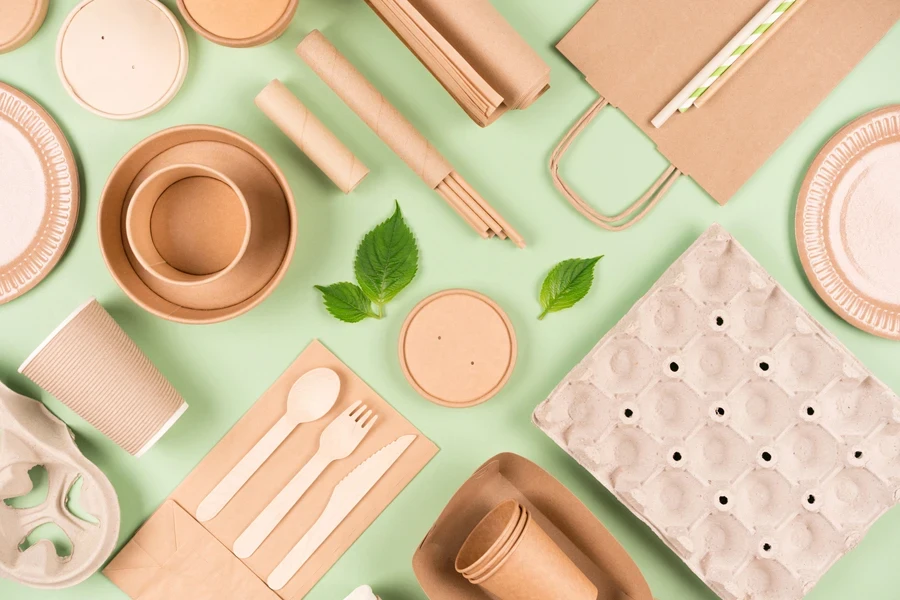Table of Contents
1. Introduction
2. Understanding utensil varieties and their applications
3. Insights into the utensil market of 2024
4. Key considerations for selecting utensils
5. Spotlight on leading utensil models and their features
6. Conclusion
Introduction
Selecting the right utensils is crucial for culinary professionals aiming to enhance their operations and meet the evolving demands of 2024’s kitchen environments. As the culinary world becomes increasingly sophisticated, the choice of utensils can significantly impact the efficiency, safety, and quality of food preparation. With the right tools, tasks become more streamlined, safety in the kitchen improves, and the quality of the culinary output is heightened, making a direct impact on customer satisfaction and operational success. This introduction sets the stage to explore the types, applications, and strategic selection of kitchen utensils that align with current and emerging culinary trends.
Understanding utensil varieties and their applications

Overview of common utensil types
The landscape of kitchen utensils has broadened significantly, reflecting a diverse spectrum of tools designed to cater to various culinary tasks. Essential utensils include spatulas, knives, whisks, and tongs, each crafted from materials such as silicone, stainless steel, and wood. These materials are chosen not only for durability and functionality but also for their compatibility with different cookware surfaces to prevent damage. Silicone utensils, for instance, are prized for their flexibility and heat resistance, making them ideal for non-stick cookware. Stainless steel is valued for its strength and longevity, essential for tasks requiring precision and force.
Specific applications for diverse utensil sets
The application of utensils extends beyond mere functionality; they play a crucial role in enhancing culinary efficiency and outcome quality. For example, silicone spatulas are perfect for scraping every last bit of batter from a bowl, while stainless steel tongs offer the precision needed for flipping meats without piercing them, thus retaining juices and flavor. In professional settings, the right utensils can mean the difference between a satisfactory dish and a culinary masterpiece. The choice of material also affects the longevity and maintenance of utensils, with options like stainless steel offering ease of cleaning and silicone ensuring protection of delicate surfaces during cooking.
Insights into the utensil market of 2024

Experts currently value the kitchen hand tools market at US$ 786 million, and they expect it to reach US $1.265 billion by 2033. They estimate this boost will happen at a 4.9% compound annual growth rate (CAGR) from 2023 to 2033.
Analysis of market trends and consumer preferences
In 2024, the utensil market is witnessing a pronounced shift towards sustainability and multifunctionality, driving manufacturers to innovate in both materials and design. Consumers increasingly prefer utensils that offer longevity and environmental benefits, such as biodegradable materials or items made from recycled goods. This trend is not only a reflection of growing environmental consciousness but also a response to economic factors that favor durable goods over disposable alternatives. Furthermore, the demand for aesthetically pleasing yet practical kitchen tools has led to a rise in products that seamlessly blend functionality with modern kitchen decor, emphasizing clean lines and minimalistic colors.
Impact of technological advancements on utensil development
Technological innovations are significantly influencing utensil development, with smart kitchen tools becoming increasingly prevalent. Features such as connectivity with other kitchen appliances, temperature sensors, and automation capabilities are being integrated into everyday kitchen items, making cooking more intuitive and less time-consuming. For example, smart cutting boards now come equipped with sensors that guide portion sizes and cooking processes, linking with apps to provide nutritional information and meal planning. These advancements not only enhance the culinary experience but also cater to the growing health-conscious segment of consumers looking for more control over their cooking habits and dietary intake.
The integration of technology in kitchen utensils is reshaping how culinary tasks are approached, reflecting broader trends in the home automation sphere. As these tools become more interconnected, the potential for data collection and personalization increases, offering unprecedented convenience and customization in meal preparation. This technological leap in utensil development underscores a broader trend of digital integration into personal and professional lives, proving that the future of cooking extends far beyond traditional methods.
Key considerations for selecting utensils

Material quality and durability
The selection of kitchen utensils is significantly influenced by the quality and durability of the materials used in their manufacture. Materials such as stainless steel, silicone, and high-grade plastics are prevalent due to their longevity and safety in food preparation. Stainless steel is especially valued for its rust resistance and robustness, making it ideal for high-use environments. Silicone offers flexibility and heat resistance, suitable for non-stick cookware to prevent surface damage. Durability not only affects the utensil’s lifespan but also its ability to maintain its form and functionality over time, reducing the need for frequent replacements and thus enhancing cost-efficiency in professional kitchens.
Ergonomics and ease of use
Ergonomics plays a pivotal role in the selection of kitchen utensils, particularly in professional settings where tools are used extensively and repetitive strain is a concern. Utensils with ergonomically designed handles that ensure a comfortable grip can significantly reduce hand fatigue and increase efficiency. Features such as non-slip grips and balanced weight distribution are critical for preventing accidents and improving precision in task execution. The ease of use is also enhanced by intuitive design features that align with the user’s natural movements and interactions with the tool.
Compatibility with different cookware types
When selecting utensils, compatibility with various cookware types is a crucial consideration. The interaction between utensils and cookware affects not only the longevity of the cookware but also the safety and quality of the cooking process. For instance, metal utensils can scratch and damage non-stick coatings, while wooden or silicone utensils are generally safe for all types of surfaces. Additionally, the heat resistance of utensils is vital to prevent melting or deformation when used with high-temperature cooking methods. Selecting the right utensils for different cookware materials ensures that both the tools and the pots and pans maintain their condition and performance over time.
Spotlight on leading utensil models and their features

Review of Top-Rated Utensil Sets
In 2024, several kitchen utensil sets stand out for their exceptional quality and thoughtful design, catering specifically to the needs of culinary professionals.
OXO Good Grips 15-Piece Everyday Kitchen Tool Set: This set is renowned for its comprehensive collection of tools, which include a flexible turner, 12-inch tongs, and a unique square turner. Crafted from durable materials like nylon, stainless steel, and silicone, these utensils can withstand temperatures up to 400 degrees Fahrenheit. The set’s standout feature is its ergonomic design, making each tool easy to handle and conducive to professional kitchen environments.
Umite Chef Kitchen Cooking Utensils Set: A 33-piece collection that impresses with its silicone heads and wooden handles, this set is specifically designed to be gentle on nonstick cookware while withstanding temperatures up to 446 degrees. Its extensive range of tools, from spatulas to ladles, makes it ideal for diverse cooking tasks, and the inclusion of measuring cups and spoons adds further utility.

All-Clad Professional Stainless Steel Kitchen Tool Set: Preferred for high-temperature cooking environments, this six-piece set is perfect for use with heavy-duty cookware like stainless steel and cast iron. The tools feature extra-long handles for safety and a polished finish that enhances any professional kitchen’s aesthetics.
GreenPan Kitchen Utensil Set: This seven-piece set is crafted from silicone with a rigid steel core for added durability. It includes a variety of tools such as a fish turner and a whisk, all designed to be heat-resistant up to 390 degrees. Its non-scratch silicone heads make it suitable for all types of cookware, including nonstick and ceramic.
Handmade Teak Wood Utensil Set: For those who value aesthetics as well as functionality, this six-piece set includes beautifully crafted pieces made from sustainable teak wood. While they require more maintenance, including regular oiling to preserve the wood, their natural beauty and durability make them a worthwhile investment for any kitchen.
Comparison of Features Across Different Brands and Models

When comparing these top-rated utensils, several features stand out:
Material Quality: The OXO and GreenPan sets use a combination of nylon and silicone, ensuring durability and heat resistance suitable for professional kitchens. In contrast, the All-Clad and handmade teak sets offer robust stainless steel and natural wood, appealing to those who prefer traditional materials.
Ergonomic Design: Each set is designed with professional use in mind. The OXO set, for example, features comfortable grips and a user-friendly design, making it ideal for long cooking sessions. Similarly, the GreenPan set’s slip-resistant grip enhances stability during use.

Specialization and Versatility: The Umite Chef set stands out for its sheer variety of tools, catering to almost every culinary need, whereas the All-Clad set focuses more on essential, high-quality tools suitable for specific tasks like frying and stirring.
Compatibility with Cookware: The silicone heads of the GreenPan and Umite Chef sets make them safe for nonstick surfaces, preventing damage during cooking. In contrast, the All-Clad tools are best used with more durable cookware types due to their metal construction.
Conclusion
Selecting the right utensils is pivotal for culinary professionals, ensuring operational efficiency and superior food quality. This guide has highlighted essential aspects like material durability, ergonomic design, and compatibility with various cookware, underlining how these factors contribute to a well-equipped kitchen. Choosing utensils thoughtfully not only enhances cooking precision but also aligns with the evolving dynamics of modern culinary environments, supporting chefs in their quest to deliver exceptional culinary experiences.



